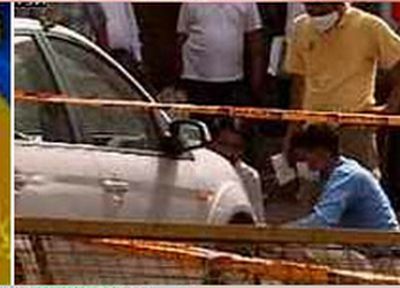BeyondHeadlines News Desk
New Delhi: The Home Ministry had informed the Rajya Sabha (upper house of Indian Parliament) in August this year that there was no terrorist involvement in the explosives found outside the Delhi High Court on May 25, 2011, a report published by English daily The Indian Express said.
The explosives, wrapped in a polythene and kept in a black bag, was placed under a Ford Figo car near Gate number 7 of the Delhi High Court. A parking attendant, who saw fumes coming out of the bag, pulled it out and threw it away. The bomb was composed of ammonium nitrate and fuel oil, and 11 non-electronic timers were fitted to it.
On September 7, a bomb blast took place near Gate No. 5, killing 13 people and injuring 74 others. In a knee-jerk reaction, the ministry transferred both the cases to the National Investigation Agency (NIA). Both the Delhi Police and the NIA work under the Ministry of Home Affairs (MHA).
In a reply to a question asked by Congress MP P J Kurian, minister of state (MoS), MHA, Jitendra Singh said: “The latest incidents of bomb blasts… in which no pointer/fact suggesting terrorist involvement is available are the ones that occurred on March 29, 2010, the bomb blast at Mehrauli, April 17, 2010, at Chinnaswamy Stadium, Bangalore, and May 25, 2011, near the Delhi High Court.” The reply was tabled on August 24.
After the May 25 incident, Delhi Police chief B K Gupta had also denied that it was a terror attack, stating that the act was carried out to create panic in the area.
After the blast, a security audit conducted by the Delhi Police identified 110 places prone to such attacks in the future. These include Delhi University, Jama Masjid, Metcalf House, Karol Bagh and Red Fort. It said only “78 iron nails” were found to have been packed in the explosive-laden briefcase, and the maximum damage was done when the glass panes installed at the reception counter of the Delhi HC broke and the shards acted as “shrapnel”.
“The bomb was made by an expert, and there was liberal use of PETN. Though there were fewer nails, the impact of the explosion caused glass shards to fly, maximising the impact of the blast. The bomb was so powerful that the concrete material on the footpath, where the bomb exploded, also acted as shrapnel and injured the victims,” said a senior police officer.
The blast left a crater on the footpath. Police said they have sent all the samples to CFSL, and will rely only on its report. However, a senior officer said that sending samples to various laboratories will be time consuming, and will only add to the confusion.





















